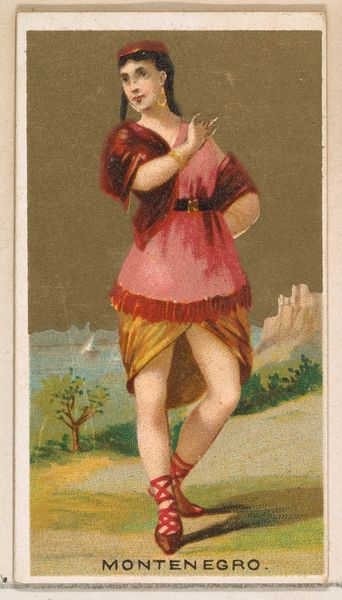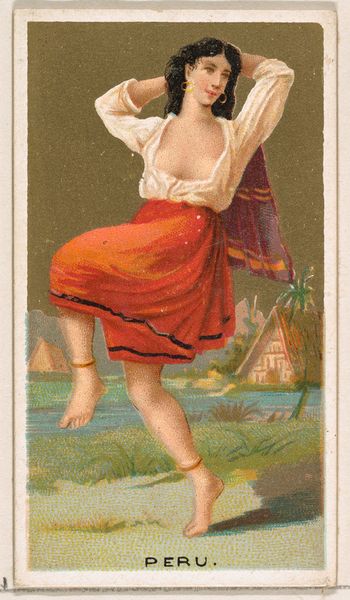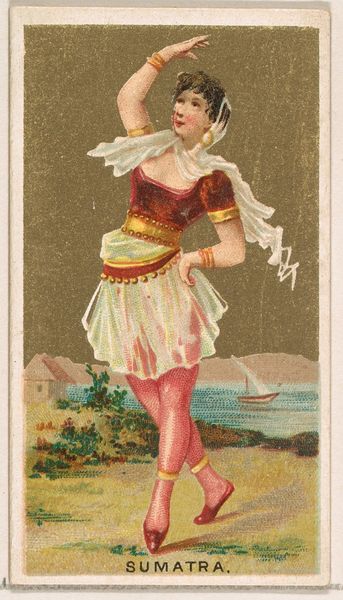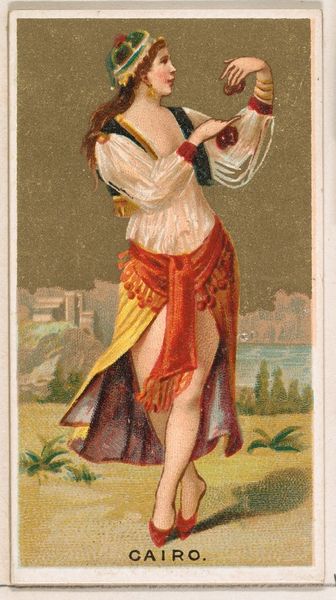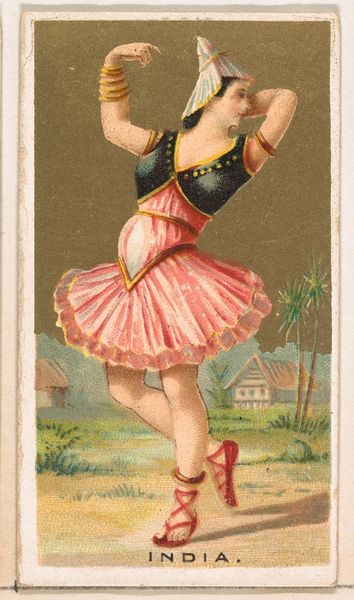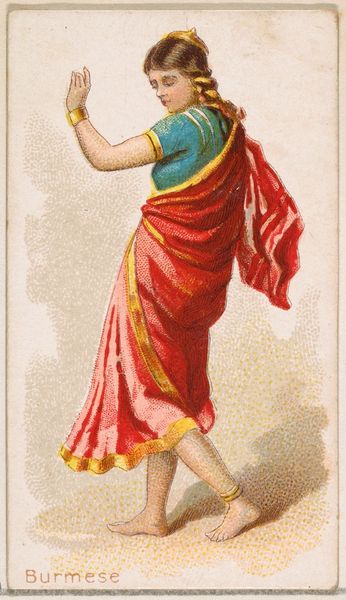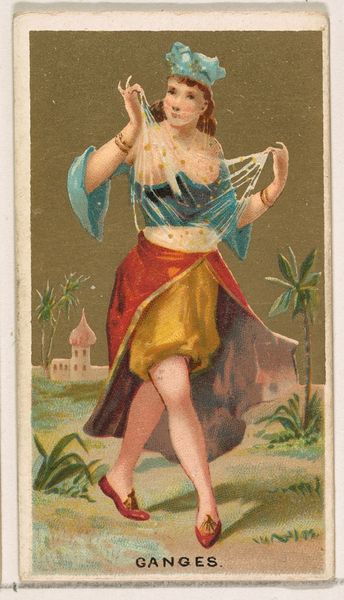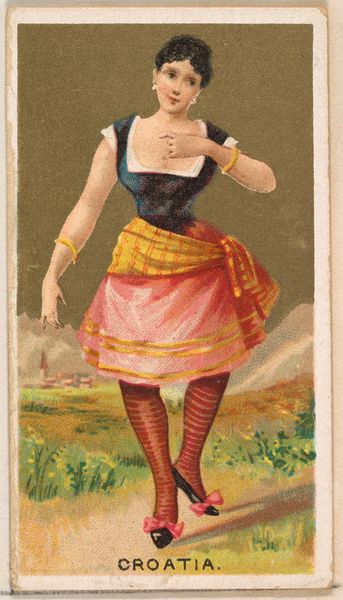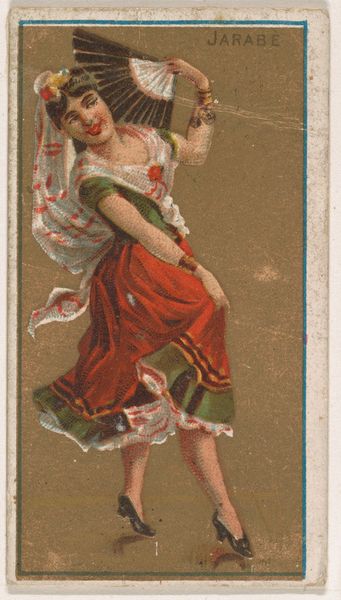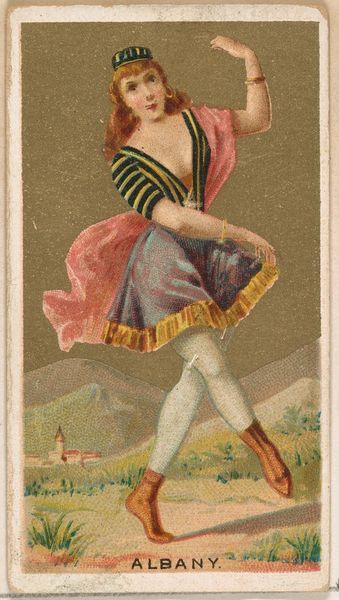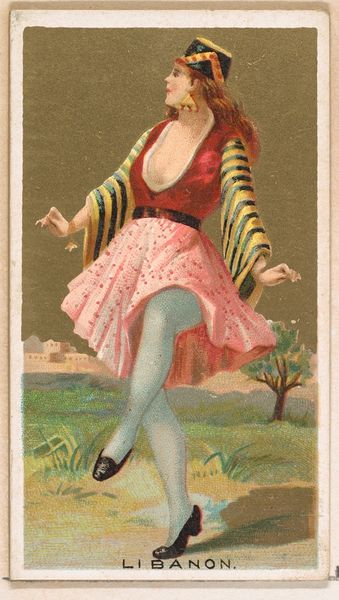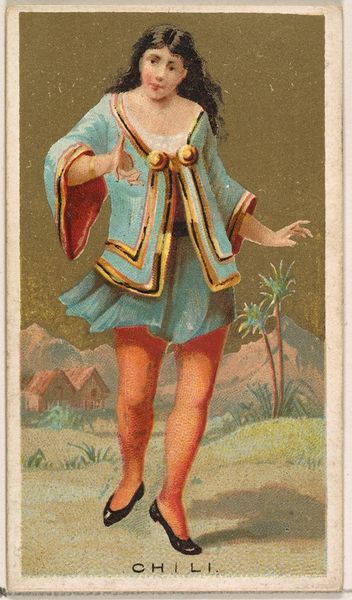
Honduras, from the Dancing Girls of the World series (N185) issued by Wm. S. Kimball & Co. 1889
0:00
0:00
drawing, coloured-pencil, print
#
portrait
#
drawing
#
coloured-pencil
# print
#
figuration
#
coloured pencil
#
watercolour illustration
#
genre-painting
#
academic-art
#
portrait art
Dimensions: Sheet: 2 11/16 × 1 1/2 in. (6.8 × 3.8 cm)
Copyright: Public Domain
This is "Honduras," a chromolithograph card from the "Dancing Girls of the World" series by Wm. S. Kimball & Co. Notice the dancer's bare feet, a symbol of humility, freedom, and connection to the earth. In ancient Greece, going barefoot was common in religious rituals, suggesting a sacred association. In Indian art, bare feet signify renunciation and spiritual purity. Consider, too, how the flowing red shawl echoes images of Greek maenads, ecstatic female followers of Dionysus, who danced wildly in states of altered consciousness. The dancer’s outstretched arms and hands, one raised and the other lowered, evoke a sense of balance, movement, and communication. This gesture appears in depictions of ancient priestesses and dancers, conveying a receptivity to divine energy or a connection between the earthly and spiritual realms. The image carries an emotional charge, engaging us on a level that transcends time and culture. Like the eternal return of the hero, these gestures and symbols never truly disappear. They resurface, evolve, and take on new meanings, reflecting the enduring power of cultural memory and the human psyche.
Comments
No comments
Be the first to comment and join the conversation on the ultimate creative platform.

